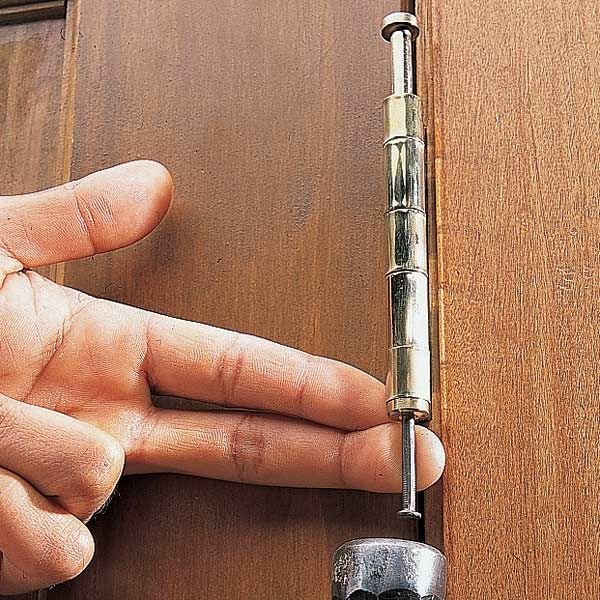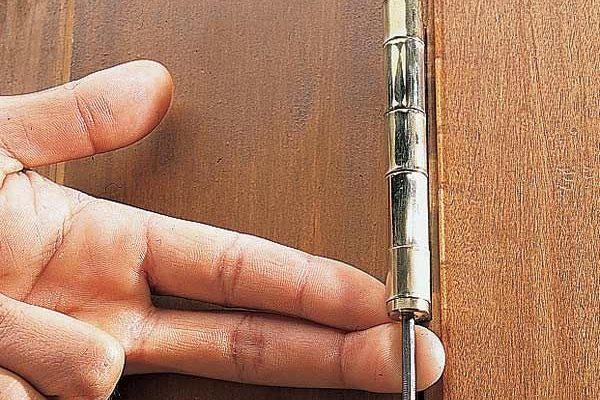
Honestly, a squeaky door isn’t just a minor annoyance. It usually means something needs attention—like a dry hinge, a misaligned latch, or a worn-out sweep. Think of your door like a bike: if you ignore the creaks and groans, you’re just asking for more trouble down the road. The good news? Silencing that squeaky exterior door is easier than you might think. You don’t have to be a pro or spend a fortune, and with a few basic tools, you can handle most door squeaks in less than an afternoon.
Whether you’re dealing with old brass hinges, a stubborn weather sweep, or a latch that just won’t quit grating, this guide will walk you through the best ways to get your door gliding quietly again.
Why Does Your Exterior Door Squeak?
Before diving into how to fix a squeaky door, let’s look at what’s causing the noise. Nearly every squeaky sound is the result of friction—something rubbing where it shouldn’t. For exterior doors, there are a few common culprits:
- Hinges are the most frequent offenders. Over time, dirt, rust, or just plain dryness can build up, making each swing loud and dramatic.
- Latches can squeak if the strike plate (that metal piece on the door frame) isn’t lined up right, or if the latch bolt doesn’t move smoothly.
- Door sweeps and weatherstripping can drag or catch, especially if they’re old, bent, or out of place.
Here’s the thing: each part of your door works together. If one part is out of whack, it can put stress on the others. That means a squeaky hinge might eventually wear down your latch or sweep, turning a simple fix into a bigger headache. So, tracking down the exact source of the noise is step one—and it gives you a running start on a long-term solution.
Lubricating Hinges: The Easiest Fix for Squeaks
If your door sounds like a rusty swing every time you open it, you’re probably dealing with a dry or dirty hinge. Lubrication is often the quickest—and most satisfying—solution.
Here’s what you’ll need:
- Penetrating oil or silicone spray (WD-40, 3-in-1 oil, or similar work great)
- Paper towels or rags
- In stubborn cases: a hammer and flathead screwdriver
To start, swing the door back and forth and listen closely to where the sound is coming from. If it’s the hinges, try this:
- Spray a small amount of lubricant directly onto the top of each hinge pin. Let it drip down into the hinge.
- Open and close the door several times to work the oil in. Wipe away any drips with a towel.
- If the squeak is stubborn, carefully tap the hinge pin out with a hammer and screwdriver, coat it with lubricant, then tap it back in.
Tip: Avoid thick greases—they can collect dust, leading to gunky hinges later.
Lubricating your hinges doesn’t just stop the squeak. It helps protect against rust and makes the door easier to open, which is a nice bonus in humid or rainy climates. If you live somewhere with salty air (think beach towns), consider re-lubricating twice a year to keep things smooth.
Cleaning and Adjusting Hinges for Long-Term Silence
Sometimes, a quick shot of oil isn’t enough. Older doors—or those that haven’t seen a screwdriver in years—might need a little extra love. Here’s how to do a deeper hinge tune-up:
First, remove each hinge pin by tapping it carefully with a hammer and flathead screwdriver. Lay the pin on a rag and inspect it. If you see rust, dirt, or blackened old grease, clean the pin with steel wool or a wire brush. For heavy rust, you can soak the pin in vinegar for an hour before scrubbing.
Before putting the pin back, check the inside of the hinge barrel as well. Use a cotton swab or a shot of compressed air to clear out debris. When it’s clean, add a thin layer of oil to the pin and reinstall. Repeat for all hinges.
If your door still squeaks or feels stiff, check the alignment. Loose hinge screws are a top cause of noisy or dragging doors. Tighten all screws with a screwdriver. If any screws spin loosely, insert a wooden toothpick coated in glue into the hole, break it off flush, and reinsert the screw for a tight fit.
Keeping hinges clean and secure does more than just silence the noise. It helps your door close tightly, which keeps out drafts and adds a touch of security—especially important for exterior doors.
Fixing Squeaky Door Sweeps and Weatherstripping
Let’s talk about the sweep—that strip of rubber, vinyl, or brush material at the bottom of your exterior door. If it’s squeaking or dragging, it can make every entry or exit feel like a wrestling match.
Door sweeps are there to keep out drafts, rain, and bugs, but they need to glide smoothly across your threshold. If yours is squeaking, first check for dirt or debris. Clean the sweep and threshold with soap and water and let it dry.
If it still makes noise, examine the sweep’s position. Sometimes, it’s installed too low or has warped over time. Loosen the screws holding it on and adjust it slightly higher so it just brushes the threshold—not drags against it. Tighten the screws when you’re happy with the fit.
If the sweep is worn out, cracked, or damaged, replacement is the best option. You can find universal or brand-specific door sweeps at most hardware stores. Just measure your door width and screw placement before heading out. Swapping a sweep takes less than 20 minutes, and it’s a quick way to end that awful scraping sound for good.
For weatherstripping that squeaks or sticks, consider replacing it with modern foam or silicone strips—they’re quieter and seal better.
Adjusting or Replacing a Noisy Door Latch
Door latches do more than just keep your door closed—they can also be a source of irritating metal-on-metal squeaks. You might hear a creak when turning the knob or a squeal as the latch bolt slides into the strike plate.
To quiet things down, first try lubricating the latch with a silicone-based spray. Spritz a little onto the latch bolt, then turn the knob a few times to work it in. Wipe away any excess.
If the noise persists, check the alignment of the latch with the strike plate. When these aren’t lined up perfectly, the latch bolt can rub or grind against the edge of the plate. Loosening the strike plate screws and shifting it slightly can make a world of difference. For doors that have settled or shifted (very common in older homes), you might need to file the edge of the strike plate with a metal file for a perfect fit.
If your latch hardware is bent, broken, or just plain old, replacing it is usually pretty straightforward. Most home improvement stores sell universal door latches and knobs that fit standard pre-drilled holes. Just make sure to match the backset (the distance from the edge of the door to the center of the knob) for a perfect fit.
Choosing the Right Lubricants and Tools
Here’s where things can get confusing: should you use oil, grease, graphite, or silicone on your door parts? Each option has its own pros and cons.
- Penetrating oils (like WD-40) are great for breaking up rust and quickly silencing squeaks, but they don’t last as long and can attract dust.
- Silicone sprays are weather-resistant, don’t collect dirt, and work well on metal and plastic parts—including hinges, latches, and sweeps.
- White lithium grease is excellent for heavy-duty doors or garage hinges, but it can be messy indoors.
- Graphite powder is ideal for locks and internal latches, since it won’t gum up delicate mechanisms.
When applying lubricants, less is more. Always wipe away excess and avoid spraying too close to wood finishes—they can stain. As for tools, keep a basic homeowner’s kit handy: screwdrivers, pliers, a small hammer, and a can of compressed air for blowing out hard-to-reach grime.
Insight: The right product makes all the difference. Cheap or incorrect lubricants can get you stuck with a worse squeak after a week or two.
When To Call A Professional (And When You Don’t Need To)
Most squeaky door problems can be solved with basic tools and a little patience. But sometimes, the noise points to a bigger issue—like warped wood, structural door frame problems, or serious rust that keeps coming back.
If you’ve tightened, cleaned, and lubricated everything and the squeak still won’t quit, or if your door is sticking badly even after adjustments, it may be time for a pro. Contractors and locksmiths have specialized tools and replacement parts for trickier repairs—or for high-end or vintage doors where you don’t want to risk making things worse.
Here’s the upside: most squeaky door fixes don’t require pro help, so don’t let fear hold you back from grabbing a screwdriver and some oil first. Nine times out of ten, you’ll have a whisper-quiet door in less than an hour.
Keeping Your Door Quiet for the Long Haul
Once you’ve silenced your squeaky exterior door, a little bit of maintenance goes a long way. Regularly check the hinges, latch, and sweep for dirt, wear, or loose screws. Lubricate your moving parts every few months, especially if you live in a damp or dusty area or if you use the door a lot.
You might be surprised how quickly dust, spiderwebs, or a tiny nick in the sweep can bring back that familiar squeak. Making door care part of your seasonal home maintenance routine—alongside checking your smoke alarms and changing your HVAC filters—will help things stay smooth and silent.
There’s nothing like the feel of a solid, quiet door. Not only does it keep your space peaceful, but it also signals that your home is cared for, right down to the little details.
Taking the time to silence a squeaky exterior door isn’t just about avoiding a minor annoyance—it’s about creating a home that feels calm and well-kept. Whether your fix involves a quick spray on the hinges, replacing an old sweep, or tweaking a noisy latch, each small effort adds up.
So next time your door pipes up, remember: you don’t need to live with the noise, and you don’t need fancy gear or special skills to handle it. Most fixes are simple, affordable, and oddly satisfying—like getting rid of that one last squeak on a brand-new bike. Give these tips a try, and you’ll have your entryway gliding quietly in no time.
